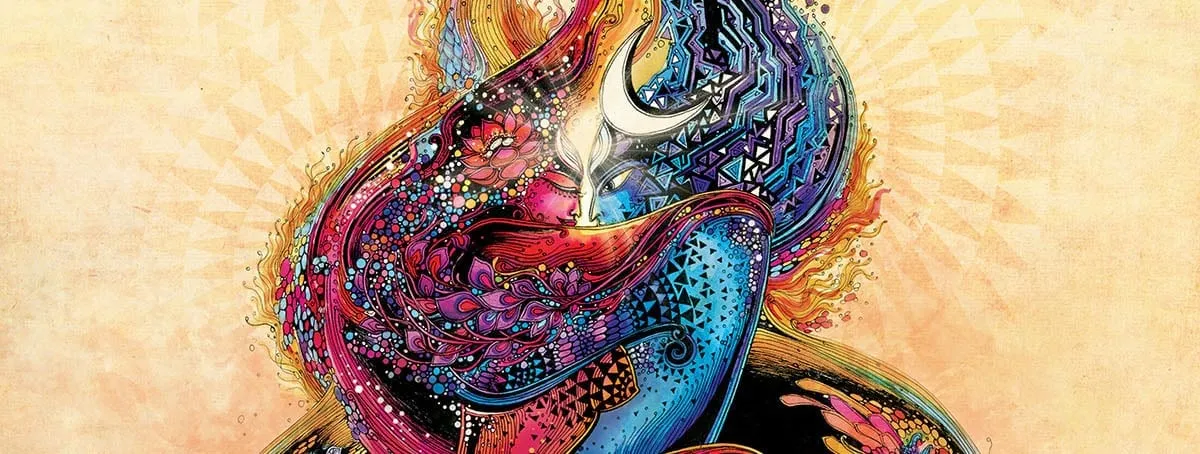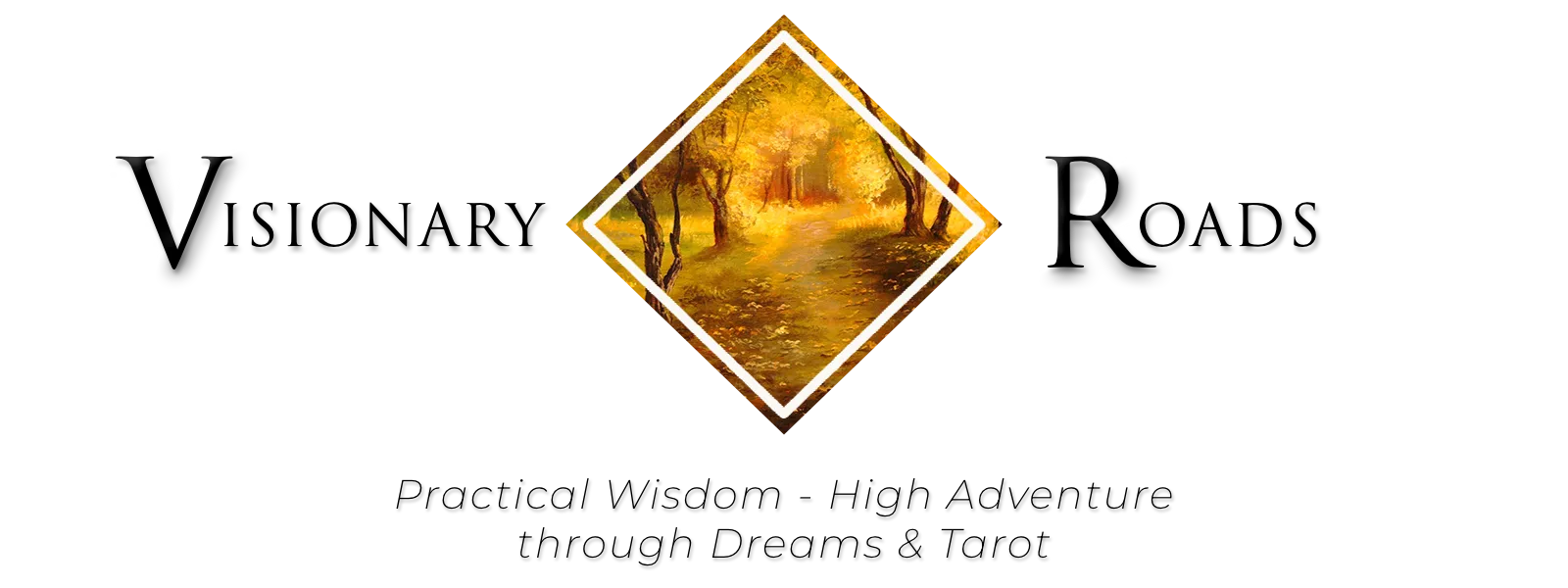121 Collaborative Artwork Meditation

This is a portion of an unpublished body of work written between 2008 - 2010 tentatively titled Patterns and Paradox.
This was the only formally outlined practice using the principles of Iris written at the time. It was only test-run a couple of times; I’d love to hear your experiences with it if you decide to give it a go.
121 (One-to-One) Collaborative Artwork Meditation is an experimental method of relationship building and communication through partnered meditation and artwork. The basic form of the practice consists of alternating periods of partner meditation with work on a co-created piece of art. It is intended to be a practical, intersubjective approach to transpersonal experience and expression combining the inner and the outer, self and other, stillness and activity.
The inspiration behind 121 is an exploration of the nature and value of relationship and communication through art and awareness. It is an attempt to provide a method for addressing a basic human need for community and intimate relationship by utilizing the nearly universal human capacities for attentive awareness and creative expression without reliance on the written or spoken word. In my experience, formal language—while valuable in many contexts—cannot convey the whole of what it means to be human, especially when applied to transpersonal and mystical experience. I hope to offer a word-independent method for discovery and inspiration in the journeys of those who seek to know themselves and a greater reality.
121 is not intended to be a therapy in the sense of addressing psychological imbalances (professionally diagnosed or otherwise). Collaborative Artwork Meditation assumes a relatively well-adjusted and socially-functional person who wants to expand and strengthen their sense of connection with themselves, their environment, and their fellow beings who share their world. So while the work may in some ways parallel Art Therapy, the focus is more on strengthening well-adjusted creative expression and inquiry into the nature of relationship. The difference may be likened to the difference between emergency and preventative medicine—one seeks to restore homeostasis while the other seeks to enhance its functioning.
The basic form of 121 can be adapted in seemingly infinite ways while the core principles remain the same. These core principles are: interior/exterior, self/other, stillness/activity. These three may be simplified into the interdependence of sameness and difference and the basic realization of relationship (intersubjectivity) as the foundation for subject and object.
121 has two major phases in the cycle of meditation and expressive art: The Alpha Phase and the Omega Phase.
Alpha Phase: In the Alpha Phase, both partners engage in meditation with focus on the exterior; that is, each partner connects with the other in some shared, sensory fashion. The designation Alpha (the first letter of the Greek alphabet) signifies relationship as the basis of all activity. It is also meant to suggest a primordial, formless aspect as in this phase neither partner actively manifests artwork.
Omega Phase: In the Omega Phase, one partner is absorptive and the other is extensive. The absorptive partner remains in absorptive, inward-turning meditation with eyes closed for the duration of the Phase. The other begins, extends, or completes a piece of shared artwork in an outward expression of creative manifestation. Omega (the final letter of the Greek alphabet) suggests the completion or manifestation of some form as well as the sharp distinction between the inward-turning partner and the outward-expressing partner.
My initial idea is to have a session last for a total of one hour total, with alternating Alpha and Omega phases lasting 5 minutes each. Each person, then, will have approximately 15 minutes of inner and outer meditation followed by 5 minutes of expressive activity—that is, each person will go through Alpha, absorptive Omega, Alpha, then extensive Omega in a 20-minute period, with three such cycles in one hour. However, changing the total time or length of each phase may offer interesting variations to the basic 5/5/60 (time Alpha/time Omega/time Total) scheme.
A 121 session can be open-ended, allowing the partners to create freely with whatever materials they have on hand. A session may also be themed, somehow limiting the materials or object of contemplation. For example, in an open-ended session, the materials may be paper, watercolors, and three sizes of brush. The expressive partner during the Omega Phase could freely use whatever colors and brushes they would like, and could paint anywhere on the paper. During a themed session, perhaps one partner may only use “cool” colors (blues, greens, and purples) while the other uses “warm” colors (oranges, reds, and yellows). Or, perhaps, the theme would be a particular idea such as “companionship” where the object of meditation and expression revolves around this idea. The potential choices for themes are infinite, limited only by the imaginations of the persons involved.
My initial vision for 121 uses visual art, but I can see the possibility to adapting the practice to any form of creative expression.
The Organization of a Session
121 can be done with just two partners, or with a larger group of paired individuals. When working with a group, it may be useful to have a facilitator who could choose a theme, indicate the transitions of Alpha to Omega (by ringing a bell, setting a stopwatch, etc.), and/or help with basic guidance on a particular meditative technique. For the remainder of this outline, I will assume a group setting as it involves the more complex case; a two-person session can be seen as a single partner pairing of the larger group. Where a facilitator is indicated, the two-person pair will jointly come to a decision on how to proceed.
Arrival and Partner Pairing: Prior to or upon arrival, each person is paired with a partner for the session.
Warm Up: This may be an informal or formal part of a session. Prior to the initial Alpha Phase, anyone may free-form sketch, paint, etc. A partnered hand massage may also be beneficial to stimulate and relax the body and to build rapport with one’s partner.
Preparation: Have art materials within easy reach of each partner pair. The pair (typically) face each other and establish a symmetrical, equalized space by sitting at the same level in the same general position. For example, both partners are sitting on the same kind of folding chair, both are sitting cross-legged on a meditation cushion, etc.
Each pair will decide which partner will be extensive (active) during the first Omega phase. To simplify this process, the facilitator may indicate which individuals will be expressive first. For example, the facilitator would have each pair set up facing each other in a line with one person of the pair on the facilitator’s left and the other person of the pair on the facilitator’s right. The facilitator then indicates that those on the facilitator’s right will be extensive first. The facilitator decides what meditative techniques will be used in the Alpha and absorptive Omega Phases and may give simple instruction or guidance on these techniques.
Alpha Phase: The facilitator indicates the beginning of the first Alpha Phase. The pair remains in the same, symmetrical position or movement for the duration of the Phase (typically 5 minutes).
Omega Phase: The facilitator indicates the transition to the first Omega Phase. The designated partner (chosen during Preparation) rests in absorptive meditation while the other begins the shared artwork.
Alpha Phase: The facilitator indicates the transition to the next Alpha Phase. The pair remains in the same, symmetrical position or movement for the duration of the Phase (typically 5 minutes).
Omega Phase: The facilitator indicates the transition to the next Omega Phase. The partners switch roles: The first to be absorptive becomes expressive and vice versa.
The Alpha-Omega cycles continue with all the Alpha Phases remaining the same, and the partners alternating roles during the Omega Phases until the facilitator indicates that the session has concluded.
Processing: An informal presentation of works created, sharing with other partner pairs, discussion with one’s partner, etc. may now take place. Participation in this phase is optional since the emphasis of the practice is on alternate methods of communication and knowledge. I typically see this portion of the session lasting approximately 10 – 15 minutes (limiting it to such a time so that the hosting space may be cleaned, closed, etc.).
A Very Basic Practice
One of the most basic practices I envision involves no formal training in either meditation or visual art, but is open to all levels of experience. If you can doodle and you can sit, you can do this practice.
Materials:
- Pencil, pen, or watercolors and brushes.
- Paper sufficiently heavy to handle pencil, pen, or watercolors.
- Clipboard or easel.
Alpha Phase: Sit comfortably across from one another at approximately the same level (same size chair, meditation cushion, etc.). Adjust the space between you so that one or both partners feel slightly uncomfortable, yet remain at a distance that is non-threatening to either party. For the duration of the Alpha Phase, focus on your partner’s eyes. Allow whatever sensation, emotion, or other feeling arise and exist without moving from the space and position created at the beginning of the Alpha Phase. Return to this position for each Alpha Phase.
Omega Phase: The designated expressive partner sketches or doodles with geometric or abstract shapes. The other partner closes their eyes and feels the sensation of breathing—the temperature and humidity of the breath, the rising and falling of chest and belly, the exchange of oxygen and carbon dioxide, the still points between inhalation and exhalation. The partners exchange roles at the next Omega Phase.
The meditative method of gazing into another’s eyes is a very simple and very powerful tool for understanding the nature of relationship. Indeed, if no other methods were ever used during a 121 session, I get the feeling that this Very Basic Practice holds the keys to profound insight that may sustain a lifetime of exploration.
A Very Basic Practice: Variations
One of the ideas behind the practice of gazing into another’s eyes is single-sense focus. This simply means utilizing a single sense (and generally isolating a sense organ) as a vehicle for focusing awareness either internally or externally. With that in mind, one could just as easily use sound, touch, smell, or taste in place of sight. Since our society tends to be heavily sight-based, using one of these other senses may be beneficial in stimulating alternate or under-developed sense faculties.
The possible restriction with using these other senses is that since they are so intimately tied to close physical proximity (with the exception of sound), some people may be uncomfortable with using these senses in a partner setting unless they are already on intimate terms with the partner. For example, some persons may be so distracted by the foreign feeling of someone else’s touch on their hand (other than an intimate partner, whether sexual or not) that they may not be able to fully take part in the practice. On the other hand, slight uncomfortability may actually be desired to help a person grow into an acceptance of something beyond what they already know. This is a fine line that facilitators to this practice might face, and I suggest erring on the side of greater physical distance when choosing meditative techniques.
That said, here are some ideas on variations to the Very Basic Practice.
Sound
This variation may be best for a single partner pair. Since sound is so pervasive, it may be difficult to isolate your partner’s sounds from the sounds of other partner pairs. On the other hand, opening up to the larger sound of the environment can be a powerful practice, too.
Alpha Phase: For the duration of the Alpha Phase, listen for any sounds that your partner makes—the sound of breathing, a slight movement of clothing, other subtle sounds that border the audible. Eyes remain open (though not necessarily gazing into your partner’s eyes). If the two partners are alone (i.e., not in a group setting), you both may tone or chant the same sound(s) such as a simple “Ahhh” or “Ohhh”. Allow whatever sensation, emotion, or other feeling arise and exist without moving from the space and position created at the beginning of the Alpha Phase. As another variation, have the group chant the same simple sound together.
Omega Phase: The same as the Very Basic Practice for sight.
Touch
Alpha Phase: For the duration of the Alpha Phase, touch each other’s hands and remain in that position (that is, do not rub, brush, or massage each other’s hands). Eyes remain open, perhaps looking at the hands. Allow whatever sensation, emotion, or other feeling arise and exist without moving from the space and position created at the beginning of the Alpha Phase. A variation can be done sole-to-sole (feet touching).
Omega Phase: The same as the Very Basic Practice for sight.
Touch II
Alpha Phase: For the duration of the Alpha Phase, sit back to back with as much contact to your partner as possible. Eyes remain open. Allow whatever sensation, emotion, or other feeling arise and exist without moving from the space and position created at the beginning of the Alpha Phase.
Omega Phase: The same as the Very Basic Practice for sight.
Scent
Alpha Phase: For the duration of the Alpha Phase, set or hold an aromatic object (flower, essential oil, piece of fruit, etc.) between each other and smell the object. Alternatively, have two of the same aromatic objects—one for each person. Allow whatever sensation, emotion, or other sense arise and exist without moving from the space and position created at the beginning of the Alpha Phase. (Faces will be in close proximity; be mindful of each other’s breath and keep one’s mouth closed. The facilitator may want to have breath mints on hand).
Omega Phase: The same as the Very Basic Practice for sight.
Taste
Alpha Phase: For the duration of the Alpha Phase, set or hold a beverage between the partners with a straw for each. Very slowly sip from the beverage together. Alternatively, have a piece of food evenly divided (or several pieces of the same food) and feed each other one piece per Alpha Phase. Allow whatever sensation, emotion, or other sense arise and exist without moving from the space and position created at the beginning of the Alpha Phase. (Be mindful of hygiene and wash hands thoroughly before feeding another food with or without utensils).
Omega Phase: The same as the Very Basic Practice for sight.
[image credit: Pooja Bhapkar]

